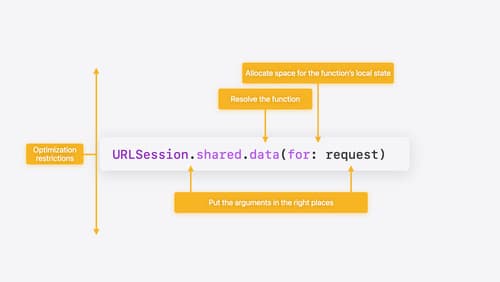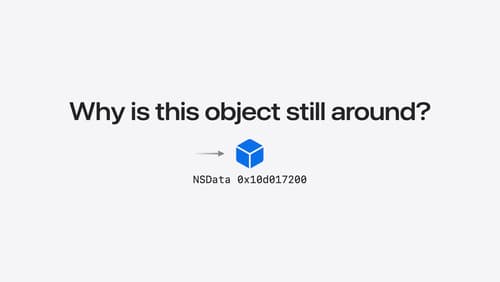when a value type is stored on the heap
Asked on 2025-02-25
2 searches
In Swift, when a value type is stored on the heap, it typically occurs because the value cannot fit into the fixed-size buffer that Swift uses for protocol types. Swift uses an arbitrary buffer size of three pointers. If the value stored in a protocol type can fit into that buffer, Swift will store it there. Otherwise, it allocates space for the value on the heap and stores a pointer to it in the buffer. This is discussed in the session Explore Swift performance.
Additionally, when dealing with dynamically-sized types or when the compiler cannot statically determine the size of a type, Swift may allocate memory on the heap. This is necessary for types whose layout is unknown at compile time, such as certain generic types or types that may change in future OS updates. This is also covered in the session Explore Swift performance.

Explore Swift performance
Discover how Swift balances abstraction and performance. Learn what elements of performance to consider and how the Swift optimizer affects them. Explore the different features of Swift and how they’re implemented to further understand the tradeoffs available that can impact performance.

Analyze heap memory
Dive into the basis for your app’s dynamic memory: the heap! Explore how to use Instruments and Xcode to measure, analyze, and fix common heap issues. We’ll also cover some techniques and best practices for diagnosing transient growth, persistent growth, and leaks in your app.

A Swift Tour: Explore Swift’s features and design
Learn the essential features and design philosophy of the Swift programming language. We’ll explore how to model data, handle errors, use protocols, write concurrent code, and more while building up a Swift package that has a library, an HTTP server, and a command line client. Whether you’re just beginning your Swift journey or have been with us from the start, this talk will help you get the most out of the language.
